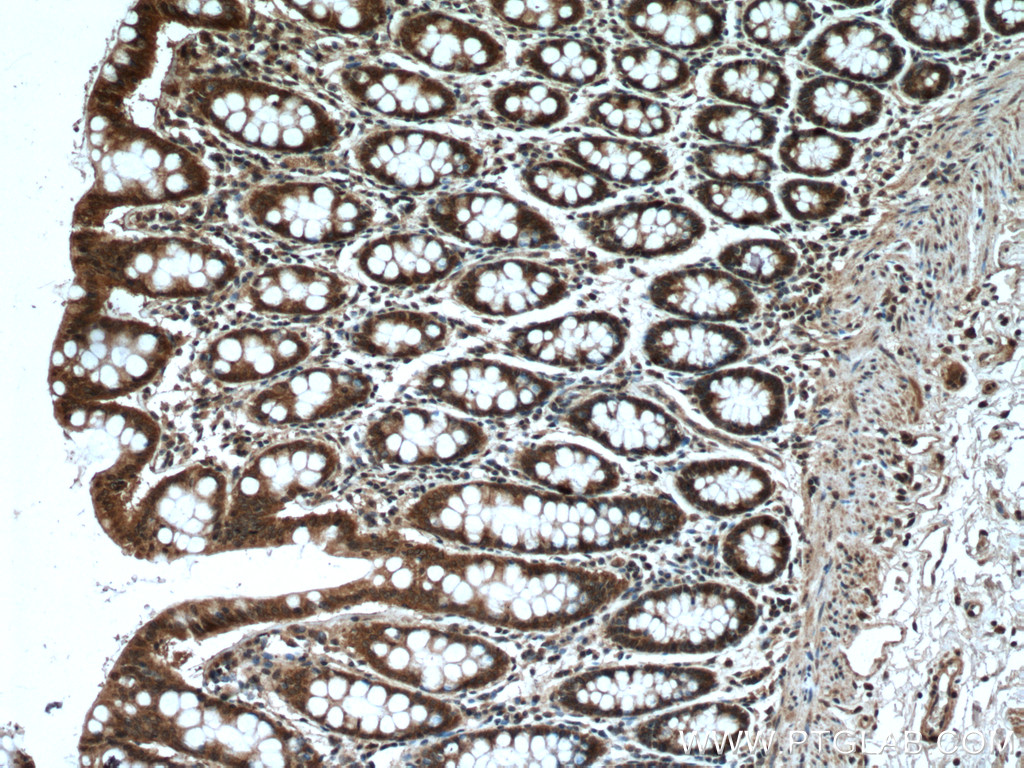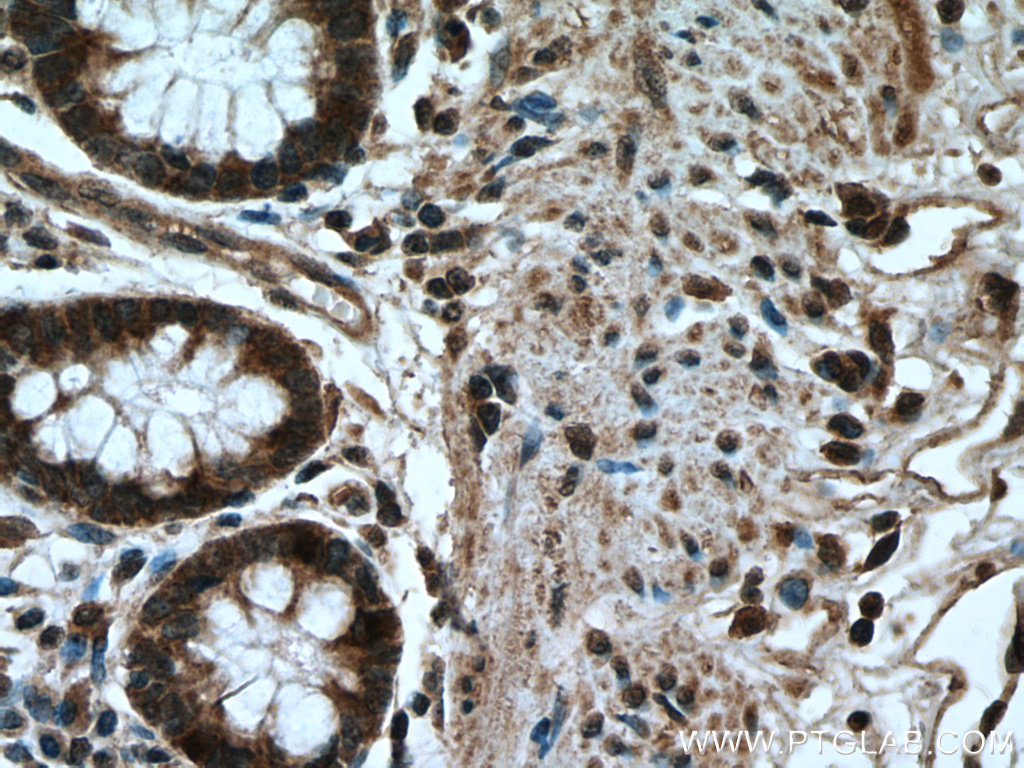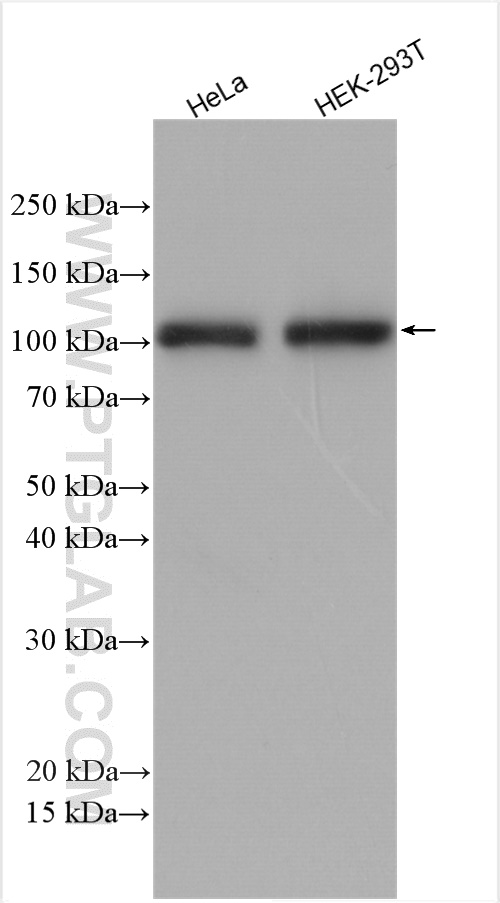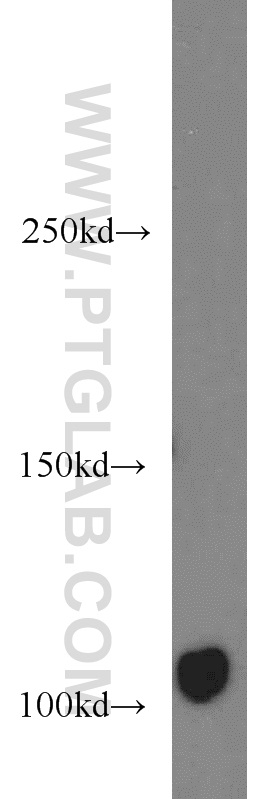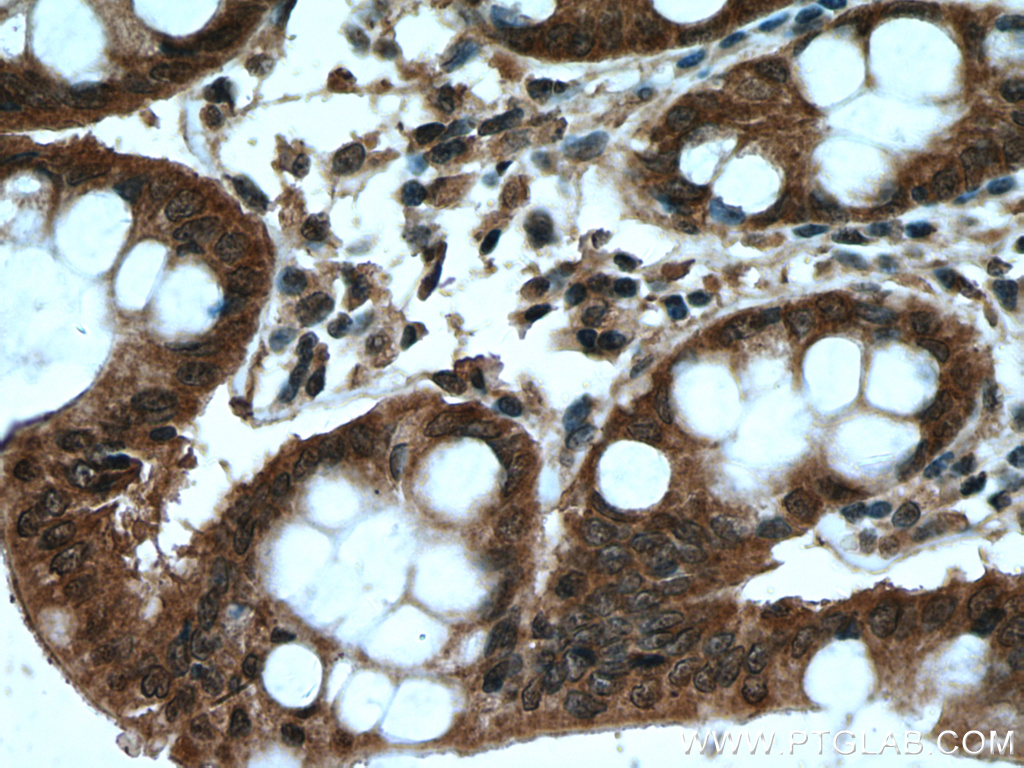验证数据展示
经过测试的应用
| Positive WB detected in | HeLa cells, HT-1080 cells, HEK-293T cells |
| Positive IHC detected in | human colon tissue Note: suggested antigen retrieval with TE buffer pH 9.0; (*) Alternatively, antigen retrieval may be performed with citrate buffer pH 6.0 |
推荐稀释比
| 应用 | 推荐稀释比 |
|---|---|
| Western Blot (WB) | WB : 1:1000-1:6000 |
| Immunohistochemistry (IHC) | IHC : 1:50-1:500 |
| It is recommended that this reagent should be titrated in each testing system to obtain optimal results. | |
| Sample-dependent, Check data in validation data gallery. | |
产品信息
16541-1-AP targets AXIN1 in WB, IHC, IP, ELISA applications and shows reactivity with human samples.
| 经测试应用 | WB, IHC, ELISA Application Description |
| 文献引用应用 | WB, IHC, IP |
| 经测试反应性 | human |
| 文献引用反应性 | human, rat, chicken |
| 免疫原 |
CatNo: Ag9858 Product name: Recombinant human AXIN1 protein Source: e coli.-derived, PGEX-4T Tag: GST Domain: 1-351 aa of BC044648 Sequence: MNIQEQGFPLDLGASFTEDAPRPPVPGEEGELVSTDPRPASYSFCSGKGVGIKGETSTATPRRSDLDLGYEPEGSASPTPPYLKWAESLHSLLDDQDGISLFRTFLKQEGCADLLDFWFACTGFRKLEPCDSNEEKRLKLARAIYRKYILDNNGIVSRQTKPATKSFIKGCIMKQLIDPAMFDQAQTEIQATMEENTYPSFLKSDIYLEYTRTGSESPKVCSDQSSGSGTGKGISGYLPTLNEDEEWKCDQDMDEDDGRDAAPPGRLPQKLLLETAAPRVSSSRRYSEGREFRYGSWREPVNPYYVNAGYALAPATSANDSEQQSLSSDADTLSLTDSSVDGIPPYRIRKQ 种属同源性预测 |
| 宿主/亚型 | Rabbit / IgG |
| 抗体类别 | Polyclonal |
| 产品类型 | Antibody |
| 全称 | axin 1 |
| 别名 | hAxin, Axis inhibition protein 1, Axin-1, AXIN 1, AXIN |
| 计算分子量 | 826aa,92 kDa; 862aa,95 kDa |
| 观测分子量 | 100-110 kDa |
| GenBank蛋白编号 | BC044648 |
| 基因名称 | AXIN1 |
| Gene ID (NCBI) | 8312 |
| RRID | AB_2062409 |
| 偶联类型 | Unconjugated |
| 形式 | Liquid |
| 纯化方式 | Antigen affinity purification |
| UNIPROT ID | O15169 |
| 储存缓冲液 | PBS with 0.02% sodium azide and 50% glycerol, pH 7.3. |
| 储存条件 | Store at -20°C. Stable for one year after shipment. Aliquoting is unnecessary for -20oC storage. |
背景介绍
Axis inhibition protein1 (AXIN1), also called AXIN, together with AXIN2 are multidomain scaffold proteins that negatively regulate Wnt signaling. AXIN1 is likely to function as a tumor suppressor. Under UV irradiation, AXIN1-HIPK2-TP53 complex forms. The complex also controls cell growth, apoptosis and development. Like AXIN2, AXIN1 undergoes poly(ADP-ribosy)lation by tankyrase TNKS and TNKS2 followed by unbiquitination by RNF146 which leads to its degradation and subsequent activation of Wnt signaling. Its deubiquitination by USP34 is important for nuclear accumulation during Wnt signaling. Recent researches find that CircAXIN1 encodes a novel protein, AXIN1-295aa, which shows at around 40-55 kDa by Western Blot. AXIN1-295aa functions as an oncogenic protein, activating the Wnt signaling pathway to promote GC tumorigenesis and progression, suggesting a potential therapeutic target for GC. Proteintech's AXIN1 antibody 16541-1-AP is a rabbit polyclonal antibdy raised against the N-terminus of human AXIN1.
实验方案
| Product Specific Protocols | |
|---|---|
| IHC protocol for AXIN1 antibody 16541-1-AP | Download protocol |
| WB protocol for AXIN1 antibody 16541-1-AP | Download protocol |
| Standard Protocols | |
|---|---|
| Click here to view our Standard Protocols |
发表文章
| Species | Application | Title |
|---|---|---|
Int J Mol Sci AXIN2 Reduces the Survival of Porcine Induced Pluripotent Stem Cells (piPSCs). | ||
Front Oncol Targeting TRIM54/Axin1/β-Catenin Axis Prohibits Proliferation and Metastasis in Hepatocellular Carcinoma. | ||
Cancer Gene Ther Stabilizing and upregulating Axin with tankyrase inhibitor reverses 5-fluorouracil chemoresistance and proliferation by targeting the WNT/caveolin-1 axis in colorectal cancer cells. | ||
Commun Biol Tankyrase-1-mediated degradation of Golgin45 regulates glycosyltransferase trafficking and protein glycosylation in Rab2-GTP-dependent manner. | ||
Exp Cell Res The transcript ENST00000444125 of lncRNA LINC01503 promotes cancer stem cell properties of glioblastoma cells via reducing FBXW1 mediated GLI2 degradation. | ||
FEBS Lett Exosomes derived from mineralizing osteoblasts promote ST2 cell osteogenic differentiation by alteration of microRNA expression. |

